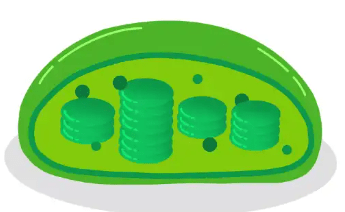all organisms are composed of ___________
cells
* made of cellulose *is rigid, strong, and stiff *provides support and protection for cell * found in plant cells
cell wall
What is the cell membrane?
The gate keeper of the cell. It controls what enters and exits the cell. It is the most important organelle in maintaining homeostasis.
What organelle is this describing?

Cell Membrane
_______________ is maintaining internal stable conditions.
homeostasis
Empirical evidence is the term used to describe
A. Information gained by direct observation of an event.
B. Cause and effect relationships.![]()
C. Events that are known by their one-time occurrence.
D. All of the above
A. Information gained by direct observation of an event.
True or False: Rudolph Virchow said all animals have cells.
False: Rudolph Virchow stated that cells come from other cells.
Through what do materials go in and out of an organism's cells?
The Cell Membrane
The prefix "homeo" means
constant
In setting up a scientific experiment, the __________ is the object or situation that is artificially changed and the __________ is the object or situation that is not changed but left under normal conditions.
In setting up a scientific experiment, the _____independent variable_____ is the object or situation that is artificially changed and the ____control______ is the object or situation that is not changed but left under normal conditions.
The cell is the ******* unit of a living thing.
smallest
single-celled organisms that lack a nucleus; prokaryotes
bacteria
*digests worn out cell parts *digests dead parts or the entire cell
lysosomes
What organelle is found in an animal cell but not plant cells.
Lysosomes
What organelle is this describing AND explain why.

Mitochondria because it converts glucose to ATP energy for the cell to live and function. ATP energy is the power cells use to run (maintain homeostasis).
What do all organisms need to get rid of in order to live?
Waste
When considering the differences between science and nonscience, it is important to remember that topics covered by nonscience
A. Are highly predictable but not provable.
B. Are speculative rather than verifiable.
C. Do not challenge previous assumptions.
B. Are speculative rather than verifiable.
If an organism is *******, all functions of life happen within that one cell.
unicellular
What did Hooke use when naming a cell? AND what did he view?
A microscope and cork under the microscope to name the cell
What is the cytoplasm?
Gel - like structure that holds the organelles in place inside the cell.
What organelle takes in the sun's rays , CO2, and water to make glucose? This process is _____.

Chloroplast , photosynthesis
What is the function of the chloroplast?
Captures energy from the sun to make glucose (food) for the plant.
Which statement(s) is/are generally considered to be true by the scientific community?
A) Eventually science will be able to provide answers for all the problems facing humanity.
B) Science is limited by the ability of people to interpret information.
C) The scientific method can be applied to all types of situations.
D) All of the above.
C) The scientific method can be applied to all types of situations.
The cytoplasm is found in _______________.
Found in both plant and animal cells
What are the organelles that are ONLY found in plant cells?
Cell Wall
Chloroplast
Which is the correct sequence, from simplest to most complex?
A) Nonliving material, cell, organ, tissue, organ system, organism
B) Nonliving material, tissue, cell, organ system, organ, organism
C) Nonliving material, cell, tissue, organ, organ system, organism
D) Cell, tissue, organ, system, organism, nonliving material
C) Nonliving material, cell, tissue, organ, organ system, organism